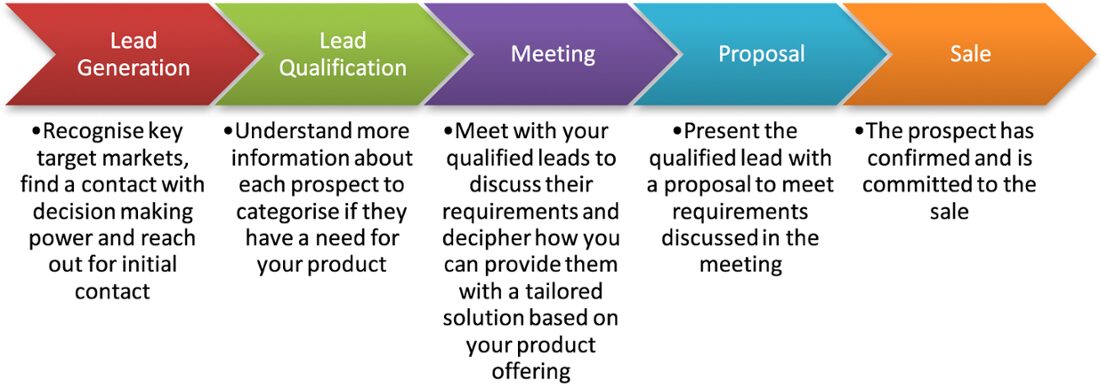Like sands through the hourglass – that’s what a healthy sales pipeline should feel like. A steady stream of leads progressing to opportunities and converting into closed deals. But what happens when that steady stream becomes more like a desert of leads that don’t seem to be going anywhere?
It may sound dramatic. After all, there will always be leads and opportunities that haven’t been reached at the right time or stage in the buying cycle to convert to closed deals. But there are ways to help your sales team minimise the risk of leads dropping off and increase the conversion to closed deals.
Developing a structured sales pipeline and the strategy handle it effectively should be at the top of your list when it comes to pipeline management.
Here’s what you should be thinking about to help your team build a stronger sales pipeline and close more deals.
Define your pipeline
A sales pipeline covers each stage of your sales process. It includes data on all opportunities and will help formulate your metrics, set targets and understand the success of your salespeople.
Opportunities move between stages during the pipeline lifecycle, dependant on the actions they take. The interest they show, their urgency of purchase, and how much research they have already done before contacting (or being contacted by) your company, can be indicators to move them further through the pipeline.
Different companies have different sales processes, so not all sales pipelines will look the same. But each pipeline should reflect the buyer’s journey that your leads and prospects go through.
As a general guide, the pipeline will go through the sales opportunity stages of: Lead generation -> Qualification -> Meeting -> Proposal -> Sale.


Making sure you have a defined pipeline process can help your salespeople stay on track, know when to follow up, push for closure, and convert prospects to sales.
Set SMART goals
Salespeople by nature are results driven. The thrill of meeting targets and achieving results is a huge motivator for sales teams. You may have heard of SMART goals (Specific, Measurable, Achievable, Relevant and Timely) and they’re a clever way to set goals for pipeline performance.
Some of the key metrics for pipeline performance can include:
- New leads created per month, by source
- Conversion rate of leads to opportunities
- Number of opportunities created per month, by source
- Conversion rate of opportunities to closed deals
- Average size of deals won
- Average time to close won deals (from lead to close)
- Win rate of deals
- Number of deals won per month, by source
Set data-driven goals for your sales team around pipeline metrics such as the number of leads, prospects and closed deals, the total value of closed deals, and conversion rates between stages.
Metrics-based goals will already be specific and measurable, given that they’re using factual numbers as their basis. When setting increase targets, make sure they’re achievable. You can review previous months’ or years’ results and check you’re providing a healthy push for increased results without being unrealistic. Goals should also be relevant to your business’ broader goals, checking that targets align with the financial results needed by the company. And lastly, keeping them timely is as easy as reviewing monthly results with sales reps.
“Set data-driven goals for your sales team around pipeline metrics such as the number of leads, prospects and closed deals, the total value of closed deals, and conversion rates between stages.”
Develop a balanced database


For salespeople working on prospects, large and complex deals can take a lot of time, focus, and follow-up to progress through the pipeline. They may need to pitch to these prospects multiple times and manage in-depth research to help close the deal. But the reward can be a high-value customer who’s also made a significant investment in your products or services.
Smaller and simpler deals can be moved through the pipeline quickly. Although the monetary reward isn’t as great, your sales team can close these deals faster and move on to the next prospect, keeping up their momentum.
Within your database of leads and prospects, having the right balance of larger or more complex prospects, and smaller or more straightforward prospects can provide a winning platform for your sales team.
Whether it’s an 80/20 rule for your specific business, or a more even playing field, it can pay to look at which types of prospects close more often, and how much revenue they bring in.
“Whether it’s an 80/20 rule for your specific business, or a more even playing field, it can pay to look at which types of prospects close more often, and how much revenue they bring in.”
Divide and conquer
Having your salespeople working on whichever leads and prospects they decide can end up creating a “Wild West” mentality. Not only can this be an inefficient way to work, it can also create friction between sales reps and take away their focus.
To keep your cowboys in line, get a plan in place on how to divide your database. For many B2B companies, this tends to be geographically driven or by industry type. For B2C companies, it’s more common to see categorisation by the end user’s age, income or interests.
Spend some time figuring out the best way to segment your leads and prospects. Divide them amongst your salespeople in a way that makes sense for your business, get them focused, and watch them conquer those deals.
Recognise risk


A key indicator of risk is the length of time a lead or opportunity stays in their current stage without progressing. As more time goes by, the possibility of a sale or conversion decreases. It’s a risk to the estimated revenue of the business and can result in wasted effort by the sales team.
Knowing your average conversion time for each stage of your sales pipeline will help you stay alert to those leads and opportunities at risk of slipping through the cracks.
When you can risk within your sales pipeline, you can empower your sales team to continue demonstrating value at each stage of the buyer’s journey. Think of it as risk prevention that will help you close more deals that may have otherwise started looking elsewhere.
Revisit lost and aged opportunities
Finding fresh, new leads can be a challenge for many companies. But what if you already had a database of potential customers at your beckoned call? Chances are, you already do.
Moving a lead or prospect through the pipeline is often reliant on making contact with the right person through the right channel at the right time. For example, if a salesperson reached out to lead by phone before that lead had a chance to research your products or services, your salesperson may have received an instant “not interested” response. But if you were to email them again in another month or two with some information they’d been looking for, would this warm them up again?
Get your sales team in a habit of reaching out to existing contacts to see if there’s any renewed interest there. There’s no effort spent in finding those leads and you never know when you’ll reach them at exactly the right time.
“Finding fresh, new leads can be a challenge for many companies. But what if you already had a database of potential customers at your beckoned call? Chances are, you already do.”
Use the tools a sales team needs
Salespeople aren’t often thrilled by the idea of doing admin tasks. Sure, managing their pipeline is an important part of their roles. But you can bet they’d rather be on the phones or out in front of prospects doing what they do best – selling.
To make sure pipeline management and lead and opportunity records are up to scratch, give your sales team the tools they need to make admin tasks quicker and easier. ERP (Enterprise Resource Planning) software solutions are available which include CRM and sales management. Look for a system that has:
- Advanced dashboards to easily see sales pipeline and progress to targets
- Automatic lead allocation based on pre-determined attributes such as geography, product, industry or timing
- Full CRM (Customer Relationship Management) functionality
- Management of reminders, appointments, tasks, and events
- Mobile apps to make CRM management out of the office quick and easy
- Email integration to keep CRM records up-to-date and communications accessible
- Pre-built sales reports that can be scheduled and emailed automatically
If you’re finding the flow of leads through your sales pipeline seems to be sinking like quicksand, it may be time to review the software you’re using to manage your sales pipeline.
For more information on a cloud-based ERP solution with CRM, sales and marketing, inventory, and more, send us a message or talk to us directly on 1800 528 783.









